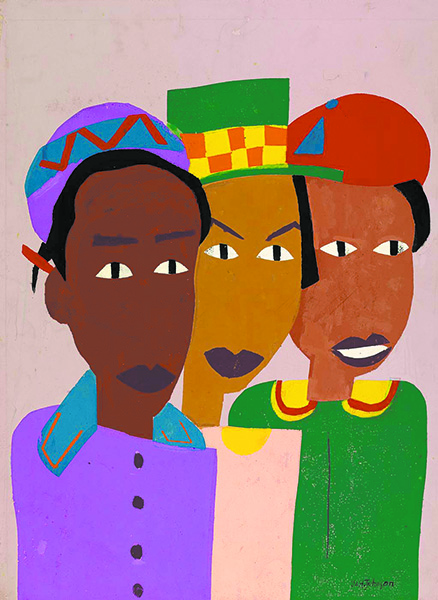Black History
Black History Art: Another Way of Telling Our Story
“Black art serves as a crucial component of Black history, preserving cultural heritage and providing a visual narrative of the Black experience. From the influence of slavery to the Harlem Renaissance and beyond, Black artists have used their talents to express themes of identity, community, and resilience.”
#BlackArt #BlackHistory #RepresentationMatters #AfricanAmericanArtists #HarlemRenaissance

New Journal and Guide Staff
Why does Black art matter in the discussion of Black History? The same reason representation matters.
Art can be defined as another way of storytelling or recording history. Black art documents the evolving chapters of Blacks in America from a period of enslavement to today’s 21st century. Thusly, it serves as a visual history lesson for each generation of Black Americans.
It is well known that before slavery, nations in Africa were full of art, sculptures, statues, tribal cloths, etc. Like the varied languages that were stripped away from the enslaved Africans as they were separated from their tribes, much of that culture was lost in the middle passage.
Nevertheless, talent is something that cannot be stripped from a race of person and over the centuries, many different types of art have emerged within the realm of Black art. From painting to drawing, murals, and sculptures, Black art attests to how creative Black people are.
During the period between the 17th century and the early 19th century, art took the form of small drums, quilts, wrought-iron figures, and ceramic vessels in the southern United States. These artifacts have similarities with comparable crafts in West and Central Africa.
Enslaved Africans in America by and large did not have access to formal education, and particularly not art training, even for the few that did learn to read and write. Yet, in northern parts of the country where Black artisans had more freedom to be creative, some like the New England-based engraver Scipio Moorhead and the Baltimore portrait painter Joshua Johnson created art that was fashioned in European traditions.
During the 19th century, Harriet Powers made quilts in rural Georgia, United States that are now considered among the finest examples of 19th-century southern quilting. Later in the 20th century, the women of Gee’s Bend developed a distinctive, bold, and sophisticated quilting style based on traditional Black quilts with a geometric simplicity that developed separately but was like that of Amish quilts and modern art.
After the U.S. Civil War, museums and galleries began to display more frequently the work of Black artists. However, Black artists were mostly limited to cultural expressions influenced by the dominant European standard. It was not until the Harlem Renaissance of the 1920s and 1930s that Black artists turned their focus to their own themes, such as the influence of slavery, Black identity, community, and the everyday experience of Black people. It is when Black art began to come into its own and gain attention by whites.
During the 1920s, Black artists such as Richmond Barthé, Aaron Douglas, Augusta Savage, and photographer James Van Der Zee became well known for their work. During the Great Depression, new opportunities arose for these and other Black artists under the Works Progress Administration (WPA) which provided federally-paid jobs to relieve the country’s massive unemployment.
The WPA led to a new wave of important Black art professors. Mixed media, abstract art, cubism, and social realism became not only acceptable, but desirable. Artists of the WPA united to form the 1935 Harlem Artists Guild, which developed community art facilities in major cities. Leading forms of art included drawing, sculpture, printmaking, painting, pottery, quilting, weaving and photography. In 1939, however, the costly WPA and its projects all were terminated.[In 1943, James A. Porter, a professor in the Department of Art at Howard University, wrote the first major text on African-American art and artists, Modern Negro Art.
In later years, other programs and institutions, such as the New York City-based Harmon Foundation, helped to foster Black artistic talent. Augusta Savage, Elizabeth Catlett, Lois Mailou Jones, Romare Bearden, Jacob Lawrence, and others exhibited in museums and juried art shows, and built reputations and followings for themselves.
The Black Arts Movement of the 1960s and 1970s was a period of resurgent interest in Black art. During this period, several Black artists gained national prominence, among them Lou Stovall, Ed Love, Charles White, and Jeff Donaldson.
Notable contemporary Black artists include Willie Cole, David Hammons, Eugene J. Martin, Mose Tolliver, Reynold Ruffins, the late William Tolliver, and Kara Walker.
The material in this article is compiled from Wikipedia.